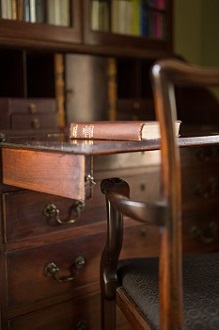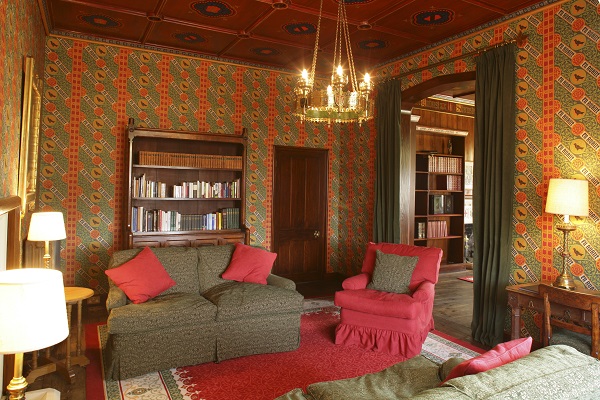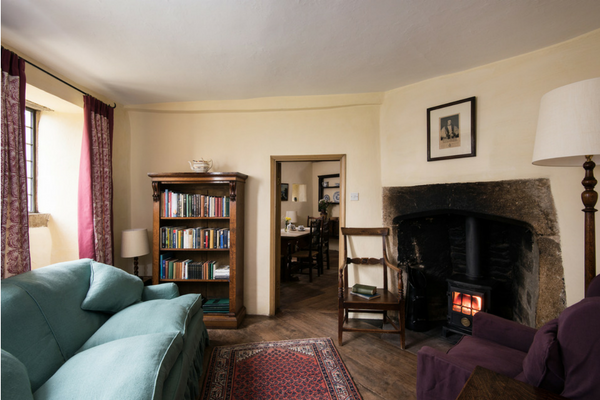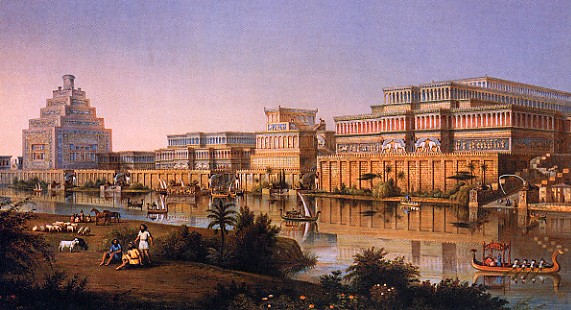
I studied English Literature as an undergraduate, and so spent a significant portion of my three years at university in and around libraries. A lot of that time was spent exploring and thinking about those libraries when I should probably have been doing work in them.
What makes a good library? Why are libraries important to us? What actually is a library? (Is it a place where we keep books, for instance, or is it the collection of books themselves?) These are the sorts of questions that would pop into my head while I was stuck having to read a particularly dull literary critic.
One of the many reasons I was excited to join the Landmark Trust was the special and important place that literature and libraries have here, and the opportunity it presented for me to return to some of those questions in a new context.
Something one quickly learns when visiting Landmark buildings is that no two libraries are the same, which is part of what makes them so endlessly interesting and exciting. And just like the buildings that contain them, each has its own particular character, attraction, and significance.
Some libraries inspire us through their history, as we sojourn in the same rooms in which great men and women once did their reading and writing. Staying at the Grange, for instance – the home of the great 19th-century architect and designer Augustus Pugin – one might choose to spend an afternoon in the library where Pugin himself would have conceived and worked upon many of his iconic designs, including those for the Palace of Westminster.

The library and sitting room at the Grange
Other libraries delight us with the books on their shelves, which, at Landmarks, are always impressive for the care, consideration, and comprehensiveness with which they have been chosen. Many of our buildings have literary associations, and so their libraries are stocked with the novels, poetry, and other literature that reflect this.
Read the works of Thomas Hardy at Clavell Tower, which overlooks the very same Dorset landscape that inspired Hardy's poems and novels. Revel in the flighty poetry of John Keats while staying at the Piazza di Spagna in Rome, in the apartment immediately above the one where Keats was taken by his friend Joseph Hearn to recuperate from TB, but where he died, tragically young, just a few months later. On the shelves at Belmont in Lyme Regis, the former home of the acclaimed novelist John Fowles, you will find books specially acquired by us that were previously owned by Fowles himself. As you browse them, you might come across some of Fowles' annotations written in his own crabbed hand – fascinating glimpses of a towering literary mind in action.
In addition to literary connections, all Landmark libraries will typically include books on the local architecture, history, and geography, as well as a panoply of other topics particular to each individual building and location, catering to every interest.

Read the theories and speculations about the origins of the Long Man – the giant, mysterious chalk figure carved into the hillside which faces you at Wilmington Priory; learn to identify the unique flora and fauna of Lundy Island before heading out to spot it yourself; or lose yourself, among other things, in the fascinating (and often entertaining) definitions to be found in Samuel Johnson’s Dictionary of the English Language – an impressive, full scholarly edition of which sits on the shelves of the library at Auchinleck House, which Johnson himself visited in 1773 during his famous tour to the Hebrides with James Boswell. (One might detect a hint of animosity towards the Scots in Johnson’s definition of ‘Oats’ – “A grain, which in England is generally given to horses, but in Scotland supports the people”).
Some libraries we appreciate simply for their warmth and cosiness; for the experience of sitting by an open fire, engrossed in a good book on a winter’s evening. Architectural environments – the dimensions, décor, and furnishings of a room – can have a profound effect upon our state of mind, and are important for attaining the right mental space needed for good reading, writing, or even just for quiet reflection free from distractions.

The library at Beamsley Hospital.
Despite their overwhelming variety, however, all libraries share something fundamental. They are all repositories of knowledge – literary sanctuaries in a tradition of human thought and learning that stretches back thousands of years to the first great libraries of the ancient world, such as those at Nineveh in Assyria and at Alexandria in Egypt.

An artist's representation of what the ancient library at Nineveh might have looked like.
On a more personal and intimate scale, libraries seem inherently to possess a sort of magic about them. It is the magic of being able to secrete oneself away from the cares and concerns of the too-busy world and recede into the depths of a comfy armchair. It is the magic of surveying a new bookshelf for the first time, and wondering at the possibilities it promises. It is the magic of the length of hours when one has the leisure and freedom to read, to think, and to appreciate certain quiet moments – a shaft of afternoon sunlight slanting onto an old wooden table, or turning the last page of a book you’ve come to love.
In this series of blogs, I hope to explore a range of Landmark’s wonderful libraries, and to give you an insight into their individual stories. We will also hear from some of the people who have worked to build and look after them. Perhaps you’ll find the inspiration to book a stay; you can finally get round to reading that book that’s been staring at you from your shelf, or you might instead choose to experience what is perhaps the main pleasure that a library has to offer – the discovery of new books, writers, stories, and ideas.